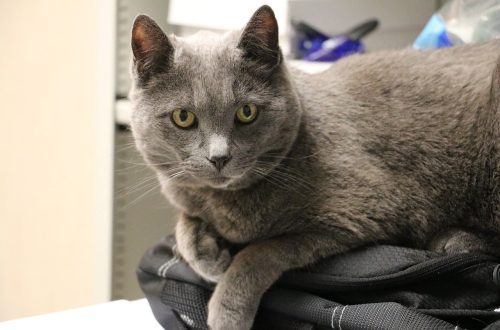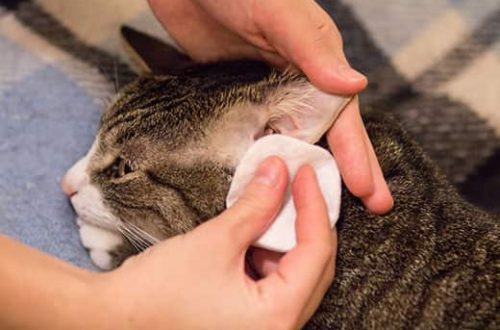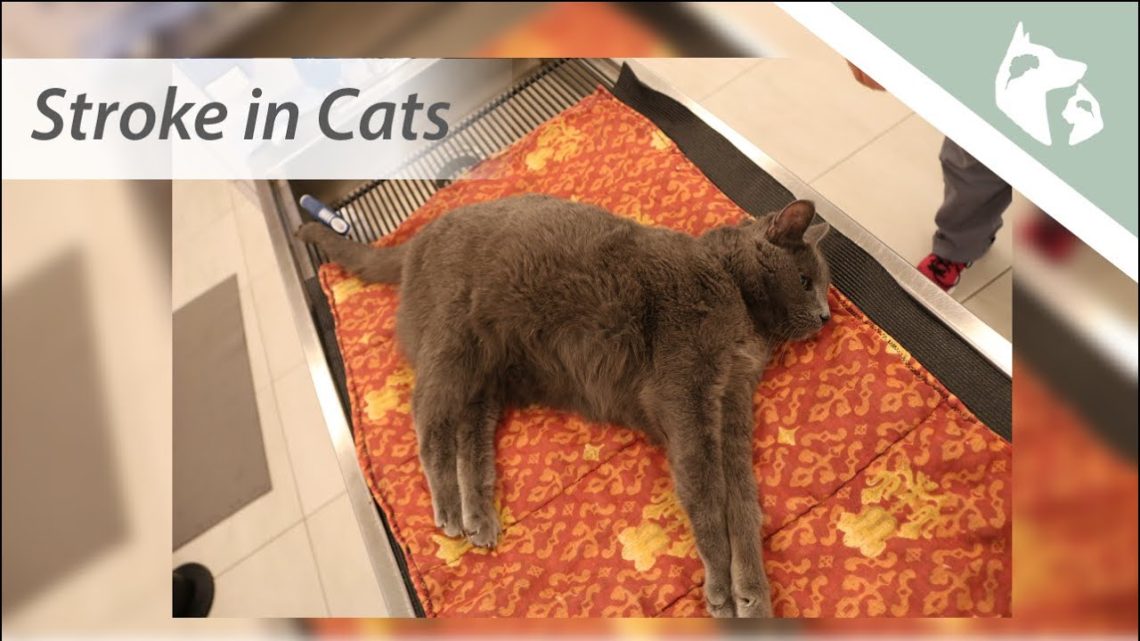
Stroke in cats
Contents
Factors that cause stroke in cats
First of all, stroke in cats can occur due to excess body weight. Obesity is often accompanied by corresponding diseases of the circulatory system, heart. Together with insufficient physical activity of the animal, this leads to congestion in the bloodstream, the formation of blood clots, the development of atherosclerosis, impaired permeability of the walls of blood vessels, and a deficiency of nutrients and oxygen. The risk group is made up of cats after castration (sterilization) and old age.
In addition, the following factors can provoke pathology:
- stress;
- drops in blood pressure;
- hypertension;
- anomalies of the cardiovascular system;
- helminthiases;
- intoxication for a long time;
- kidney failure;
- injuries (head, spine);
- diabetes;
- malignant tumors;
- Cushing’s syndrome (excessive production of cortisol).
Although there are a lot of factors, and they are all different in terms of symptoms, significance and influence on the CVS, the signs of a stroke in each case will be the same.
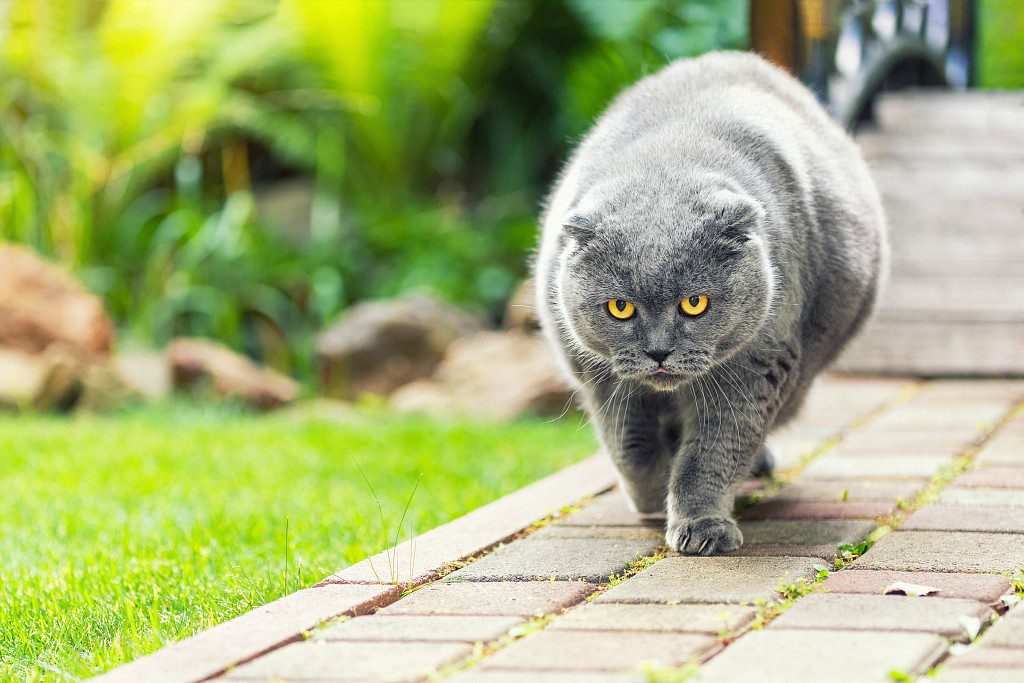
Obesity is a major factor in stroke in cats
Types of stroke in cats and their causes
There are three types of stroke in cats.
Ischemic
The blood vessel is clogged with a thrombus (atherosclerotic plaque), ischemia develops (insufficient blood flow to the cells). As a result, the nerve tissue does not receive oxygen and dies. With ischemic stroke, mass death of neurons or their partial death can be observed. Inflammation develops in the brain, its blood supply is disturbed, and edema occurs.
Ischemic stroke in cats, more often, occurs against the background of:
- kidney disease;
- diabetes mellitus;
- high cholesterol;
- diseases of the cardiovascular system;
- parasitic diseases of the blood;
- Cushing’s syndrome.
Hemorrhagic
The blood vessel of the brain bursts, a hemorrhage occurs in the brain. The hematoma presses on the surrounding tissues, preventing their normal functioning.
Factors leading to hemorrhagic stroke in cats:
- head injury;
- phlebitis (inflammation of the veins);
- neoplasms in the brain;
- infections that occur with fever;
- hypertension;
- poisoning;
- obesity.
Micro stroke
As with ischemic stroke, in this case, the pathology develops due to blockage of the blood vessel by a thrombus. However, the violation of blood flow is not so extensive, and the clot can dissolve on its own during the day without any pronounced consequences. At the same time, it is dangerous to underestimate a microstroke. Its occurrence (often more than once) indicates the presence of serious problems with blood circulation, is a precursor to a stronger blow, and can lead to a pet’s disability.
Factors that provoke a microstroke in cats:
- stress;
- hypertension;
- obesity;
- pathology of the vascular wall.
Symptoms of pathology
If a stroke occurs abruptly, and the pet is next to the owner, then it will be impossible not to notice the symptoms. But sometimes the clinical picture develops gradually, even over several days, manifesting subtle deviations.
How does a stroke manifest in cats? The main sign of a stroke in a cat is changes in the eyes: the pupils can become different sizes, as well as change frequently and regardless of any external influences.
Other symptoms include:
- sudden slowness, lethargy, lack of interest in games, food, the owner;
- “freezing” in place (if a stroke develops at lightning speed) with further loss of consciousness;
- unnatural position of the head (on its side or rocking);
- sudden lameness, dragging of limbs; as a rule, the loss of mobility affects one pair of paws of a cat;
- open mouth, protruding tongue;
- involuntary leakage of saliva;
- loss of orientation in space, the desire to hide in a secluded place;
- involuntary excretion of urine or feces;
- hearing loss; the cat does not respond to the call of the owner;
- hemorrhage in the eyes, visual disturbances, flesh to blindness; the animal can stumble on objects, stumble, fall;
- convulsive muscle contractions of varying intensity and frequency;
- difficulty chewing and swallowing food and water; as a result, the pet may refuse to eat;
- gait disturbance – during movement, the cat can sway, be confused, unsure, fall on its paws (paw);
- frequent breathing
- epileptic seizures.
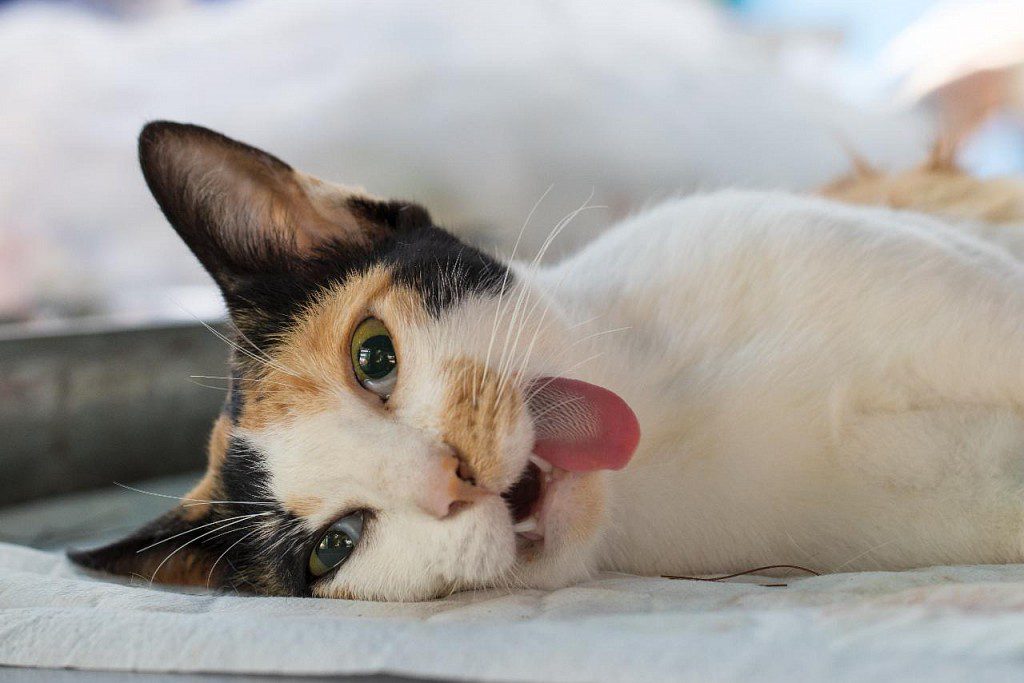
Protruding tongue is one of the symptoms of a stroke in cats.
Signs of a microstroke are:
- vomiting;
- lack of appetite;
- lethargy, drowsiness;
- fear of the light;
- pressure drops, expressed in the fading of the pet.
Symptoms of a stroke, especially if they are few, are similar to signs of other diseases, so it is better to take the cat to the veterinarian without waiting for complications. Perhaps the problem is in an infectious disease, oncology, disorders in the central nervous system.
First aid for a cat with a stroke
If you notice any symptoms of a stroke in your cat, call your veterinarian. Tell the doctor in detail about what happened, ask what actions can be taken, whether transportation will be safe at the moment. Perhaps a specialist will come to the house.
In general terms, first aid for a cat with a stroke is as follows:
- the pet is laid on a horizontal surface, on its side;
- if vomiting has occurred or saliva flows out, remove the remnants of vomit and excess fluid with a napkin;
- create a comfortable atmosphere, dim the light, remove unnecessary sounds;
- if the cat wears a collar, it is removed;
- open the window to let in fresh air.
Before the doctor arrives, the pet is stroked and talked to.
If the doctor cannot be contacted, the cat should be taken to the clinic as soon as possible. It will be good if there is someone else nearby to ensure the animal is in the correct position. Otherwise, you can put the pet in a box or basket and put it on the next seat.
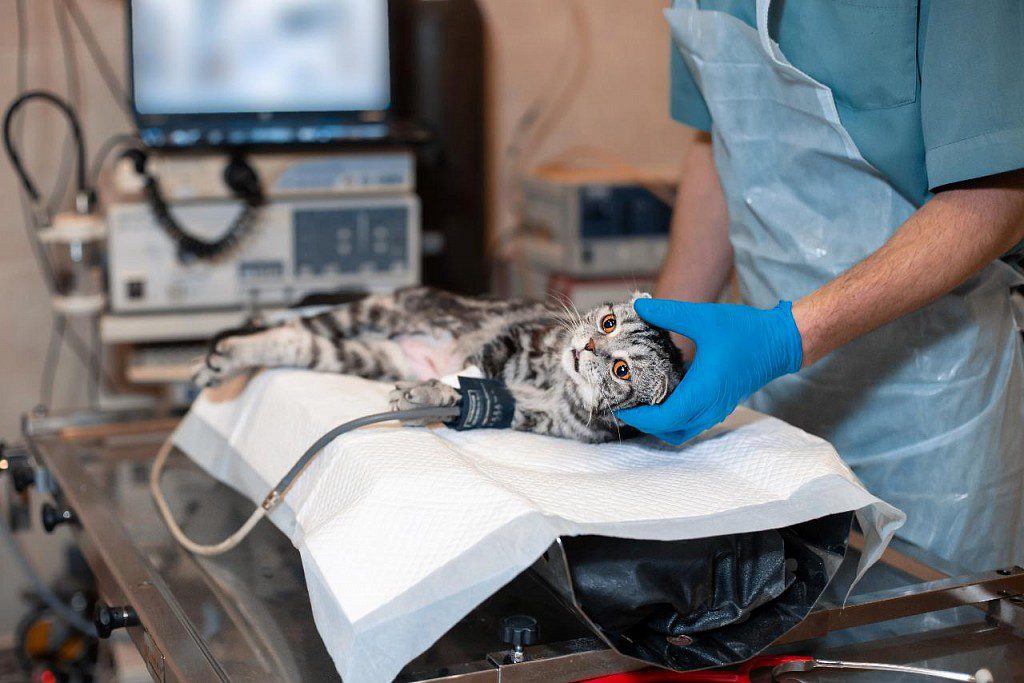
If you suspect a stroke in a cat, it is recommended to contact your veterinarian immediately!
Diagnosis of Stroke in Cats
Most often, the diagnosis is not difficult, and it is enough for a specialist to examine the cat to determine the stroke. But you still have to go through a laboratory and hardware examination to find out the exact cause, type of pathology, degree of tissue damage. This will make it possible to exclude other diseases, make a prognosis, prescribe adequate treatment. To do this, the cat may be prescribed blood and urine tests, an MRI or CT scan of the brain.
Treatment in a veterinary clinic
Depending on the condition of the animal, first of all, the actions of the doctor are aimed at stabilization. It is important to prevent loss of strength and restore water and electrolyte balance. In the future, treatment will be aimed at eliminating symptoms, preventing the development of complications. For this, the following groups of drugs are used:
- glucocorticosteroids (reduce inflammation, remove swelling);
- analgesics (relieve pain);
- immunomodulators (stimulate immunity);
- antispasmodics (relax muscle tissue, prevent cramps);
- neuroprotectors (protect nerve cells from further damage, restore connections between neurons as much as possible).
In addition, diuretics, antibacterial drugs, sedatives, antiemetics and other drugs may be prescribed in addition, as needed in this or that case. In case of obvious hypoxia, the pet will be given oxygen therapy, and in case of severe convulsions, it is possible to put the cat into an artificial sleep by administering anesthesia.
Pet home treatment
In the first days after a stroke, the cat is too weak and requires constant supervision. In addition, complications may not appear immediately, so it is better to leave the animal in the hospital for a while. Specialists will not only monitor the effect of drugs, but also respond in time with the development of a relapse.
If the condition of the animal allows or there is no possibility to leave it in the clinic, you will have to treat it yourself. Most home care consists of injections (intramuscular and/or intravenous), diet, and rest.
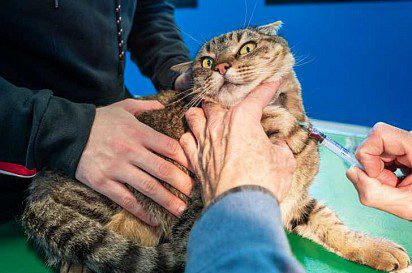
Injection to a cat at home
Your doctor may prescribe different injection options. Subcutaneous is the easiest to do, anyone can master this skill. Injections under the skin are placed mainly at the withers. Injections into the muscle are more difficult, but they also do not present any particular difficulties. It is enough to ask a veterinarian in detail or read about the features of the setting, to observe how an intramuscular injection is made in the clinic.
The situation is more serious with intravenous injections. If you do not have this skill, get ready for regular visits to the clinic for procedures. Another option is to call a specialist at home.
In the house for the animal, you need to create certain conditions. For example, so that the pet does not strain, you should move the place to sleep on the floor (remove baskets, houses, and so on), ensure that food and water are located close to each other.
If the cat moves little or is completely immobilized, she will need daily massage of the limbs and a change in position. This will make it possible to prevent stagnation of lymph and blood, to prevent the formation of bedsores.
Sunlight should not fall on the animal. It is desirable that the cat is not disturbed once again by household members (especially children) and other pets.
If a cat has preserved chewing function after a stroke, it can swallow food, then no changes are made to the diet. To prevent the development of atherosclerosis and obesity, it is recommended to reduce the content of animal fats in the diet. Otherwise, feeding is carried out with liquid food with a syringe, a baby bottle, and sometimes the use of a dropper is required.
Additionally, the doctor may prescribe physiotherapy: electrophoresis, magnetotherapy. This will also require a visit to the veterinary clinic.
Possible consequences and complications
You need to be prepared for the fact that the rehabilitation period after a stroke in a cat will last a long time, up to several years, depending on the degree of brain damage. In addition, in most cases, it is not possible to avoid any complications and consequences. Their probability and severity depend on the timeliness of contacting a veterinarian, the correctness of treatment, the characteristics of the rehabilitation period, the cat’s body, and many other factors.
Common consequences of a stroke in a cat:
- lameness, partial or complete paralysis of some limbs;
- partial or complete hearing loss;
- blurred vision, blindness;
- memory impairment (the cat may not recognize the owner, run away from him, get lost in the familiar environment).
Bedridden cats are threatened by aspiration pneumonia, an inflammatory lung disease that develops as a result of congestion due to lack of motor activity.
Forecast
The prognosis is favorable if the cat was helped in a timely manner – within an hour after the stroke. Localized brain damage is also considered favorable, as opposed to extensive damage.
If a stroke in a cat was accompanied by profuse hemorrhage, sepsis, you should not hope for an improvement in the condition and recovery. The same applies to hemorrhagic stroke compared to ischemic.
Non-compliance with the doctor’s recommendations and prescriptions, incomplete treatment can lead to a relapse even in the event of a visible improvement in the pet’s health. This is especially true for microstrokes – the animal is on the mend (or just feels good after a brief episode of illness), the owner stops taking him to physiotherapy, massage, injections, and so on. The result is a sudden deterioration, a relapse with a greater impact force, a fatal outcome is possible.
How to prevent stroke in cats
There are no special measures that can prevent the development of a stroke in a cat. You can reduce the risk of its occurrence by taking care of the cat and providing good conditions for her.
List of preventive measures:
- keep the pet’s weight within the normal range, if there is a predisposition to obesity, monitor the calorie content and volume of food, the balance of nutrients (protein should be at least 50%);
- timely vaccinate and carry out antiparasitic prophylaxis;
- as soon as the first symptoms of the disease appear, carry the pet to the clinic without waiting for the full clinical picture;
- control blood pressure in cats at risk (obese, predisposed to stroke, elderly);
- do not allow the pet to come into contact with toxic and poisonous substances;
- prevent falls, injuries;
- avoid creating stressful situations for the cat, actively use sedatives (after consulting a veterinarian), for example, when moving;
- provide enough oxygen in the room.
In addition, it is important to visit the veterinarian regularly. An elementary blood donation, an annual medical examination will help prevent not only a stroke, but also many other pathologies.



